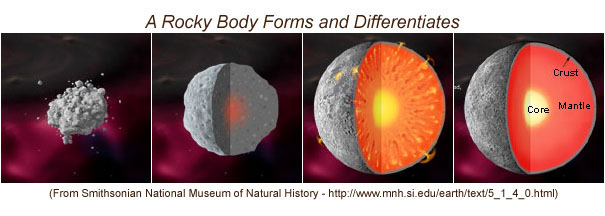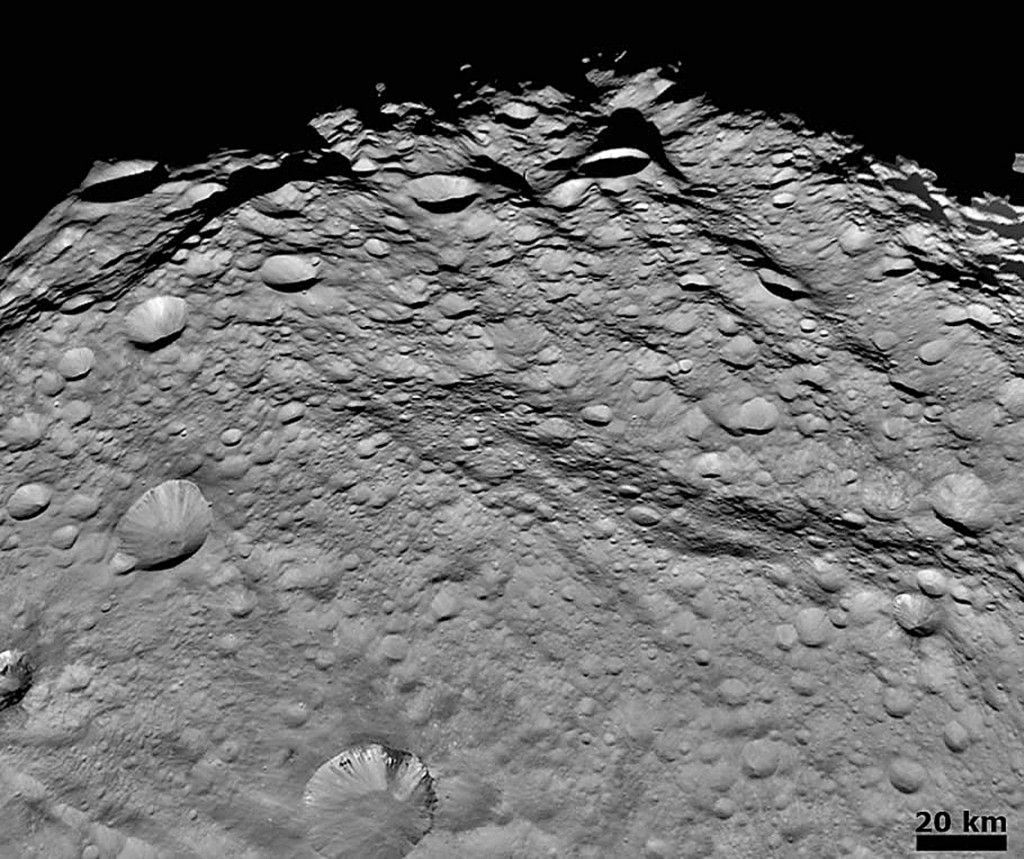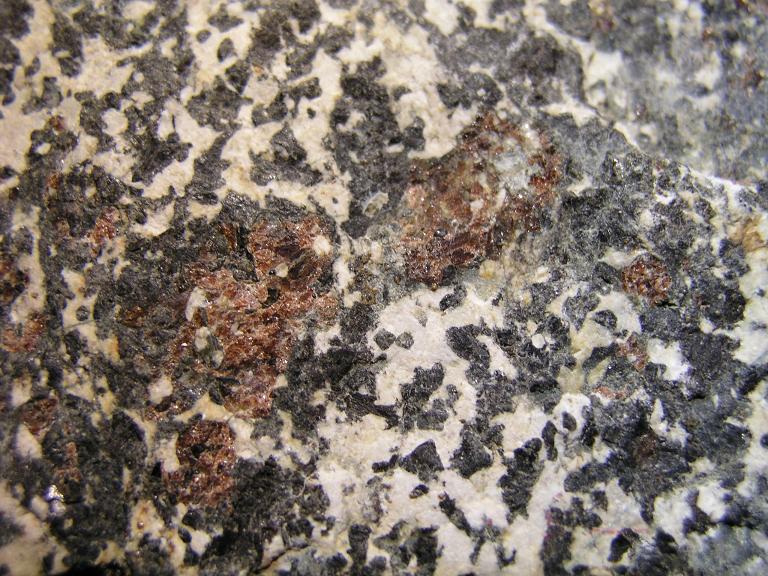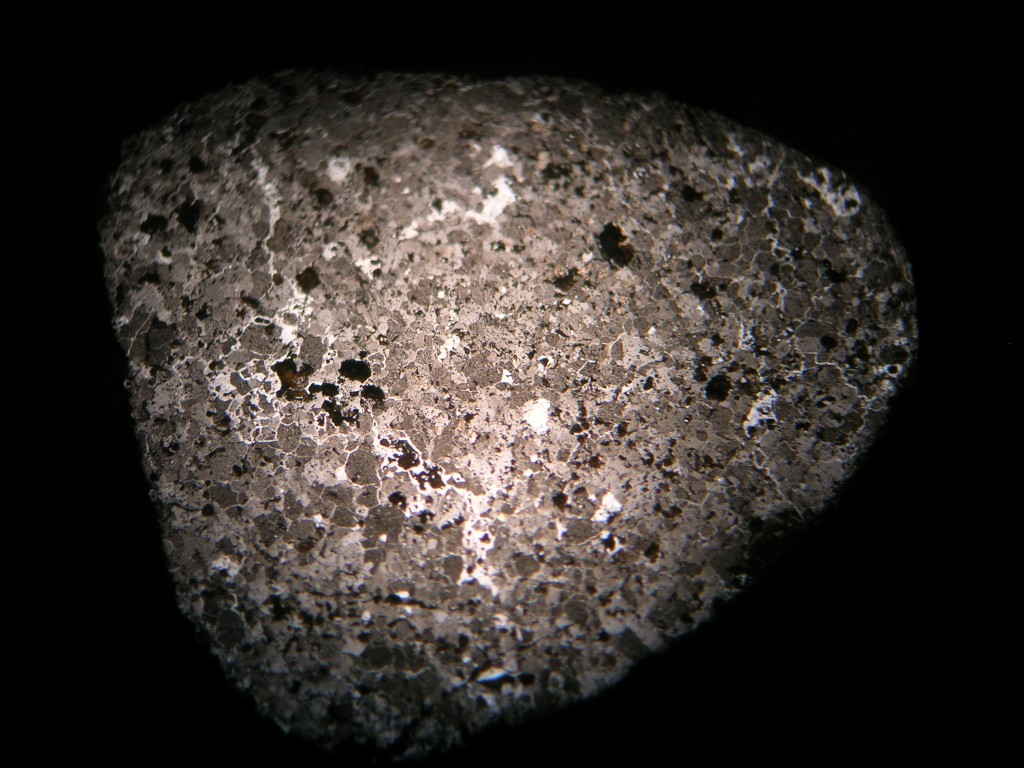achondrites
 Achondrites are a very diverse goup of meteorites representing a wide range of developmental processes in the Solar System. Some have crystallization ages rivaling those of chondrites, but they are generally at least a few million years younger than chondrites and represent metamorphically altered material.
Achondrites are a very diverse goup of meteorites representing a wide range of developmental processes in the Solar System. Some have crystallization ages rivaling those of chondrites, but they are generally at least a few million years younger than chondrites and represent metamorphically altered material.
Differentiated Achondrites
Most achondrites are “differentiated.” They represent the crust or mantle of ‘differentiated’ bodies. Differentiation is the process that occurs in larger planet(oid)-sized bodies, in which the heavier elements, due to gravity, settle to the deep interior of the body. This leads to the formation of a core that is made primarily of iron and nickel, two of the more common heavy elements present in the Solar System.

What causes these elements to move? Heat and gravity.
The primary hypothesized source of heat in young asteroids was the decay of radioactive elements. Back when the Solar System was young, there were higher concentrations of shorter-lived radionuclides around. These short-lived isotopes were created in the messy stellar environment that led to the formation of our Sun and Solar System. Today, because so much time has passed, those radioactive isotopes with shorter half-lives have mostly decayed away. Isotopes like Aluminum-26 no longer exist today. But that isotope and others like it were responsible for much of the heating necessary to equilibrate chondrites and melt parent bodies, 4.5 billion years ago.
Asteroids can also be heated via impacts; a lot of kinetic energy gets released when large, objects collide at high velocities, and a lot of that energy gets released as heat. We see plenty of evidence of this in impact-melted meteorites.
Differentiated achondrites are particularly interesting because they represent crustal samples of large bodies that, in many cases, no longer exist, to our knowledge. Meteorites like Erg Chech 002 and Pasamonte came from large planetesimals with basaltic crusts and iron cores. But since they don’t agree chemically with what we know of the four existing inner planets, they must have come from large bodies that have been destroyed or removed from our Solar System.

Some experts claim that the HED group of differentiated meteorites come from the asteroid 4-Vesta, based primarily upon spectral data. While this is possible, spectral similarities reflect only bulk chemical composition, and there are many chemically similar, but isotopically distinct, basaltic meteorites that are generally accepted to be from at least several parent bodies. Mb and other isotopic data that suggest that IIIAB irons (core material), mesosiderites (mostly mantle material), and main group pallasites (core-mantle material) may be genetically related; if they are, the HED parent body was probably completely disrupted by a collision sometime in the fairly distant past.
In my opinion, the folks who ran some recent missions wanted to share some conclusive results — and collectors want their meteorites to come from particular astronomical bodies, so the assumption that HEDs are from Vesta is popular. It’s a good working hypothesis that has merit, but has yet to be proven.

Compare to the following photo:

They look similar because they formed under similar conditions – one in space and one on Earth.
Planetary meteorites (from the Moon and Mars) are also differentiated achondrites.
Some have hypothesized that angrites, aubrites, and a few other odd achondrites could have come from the planet Mercury. All of these claims have been pretty soundly refuted, as of 2022.
Primitive Achondrites
Primitive achondrites consist of chondritic material that has been partially-to-mostly melted, but was not “differentiated.” Many consider them to be ‘melted chondrites,’ because they are in some cases chemically and isotopically similar to existing chondrite groups. In other words, they’re unusual chondrites that have been melted and extensively recrystallized.

Chondrules have since been found in a number of “primitive achondrites” like winonaites and acapulcoites. These groups probably shouldn’t be called “primitive achondrites” anymore.